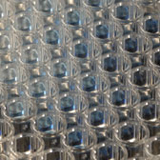Pharmaceutical proteins produced by using cell cultures and medical devices derived from animal tissues must be checked for virus contaminations according to USP Pharmacopoe Europeae or ISO standards. However, viruses used in these assays pose a risk of human infection. Therefore, these assays have to be performed under strict biosafety standards up to BL2 level.
Testing for antiviral activity can be performed at the Fraunhofer IGB according to GLP (Good Laboratory Practice) standards. The lab is certified for assay types involving “Cell-based assays for the determination of biological parameters”. An Antiviral Assay (AVA) is routinely used for measuring the biological activity of interferons (IFN) according to GLP. The determination of the antiviral activity of interferons is based on the induction of cellular responses in cell cultures, suppressing the cytopathic effect of the infectious virus. This can be detected quantitatively using a simple and robust photometric assay.Additionally, other viral assays such as the Tissue Culture Infectious Dose50 (TCID50) and the Plaque Assay are carried out according to GLP.
 Fraunhofer Institute for Interfacial Engineering and Biotechnology IGB
Fraunhofer Institute for Interfacial Engineering and Biotechnology IGB